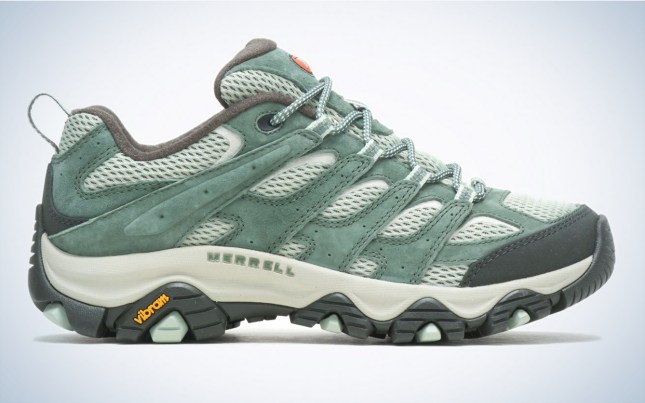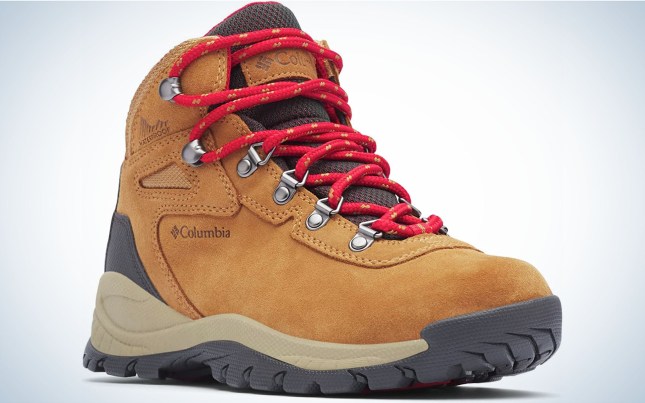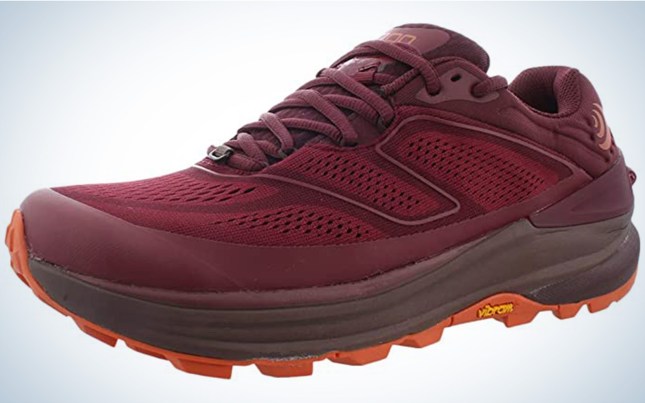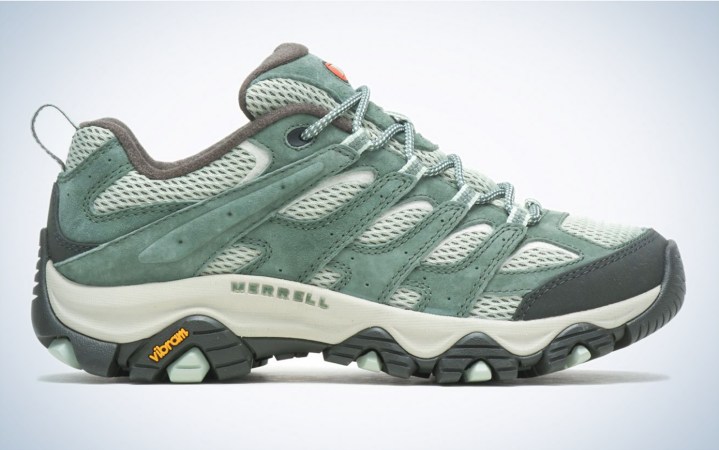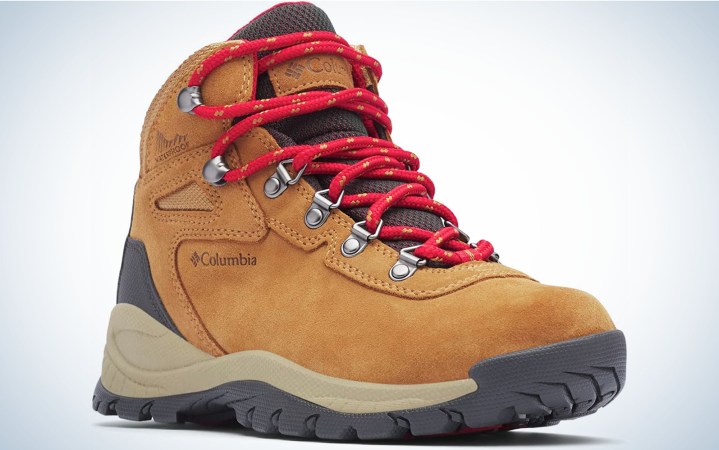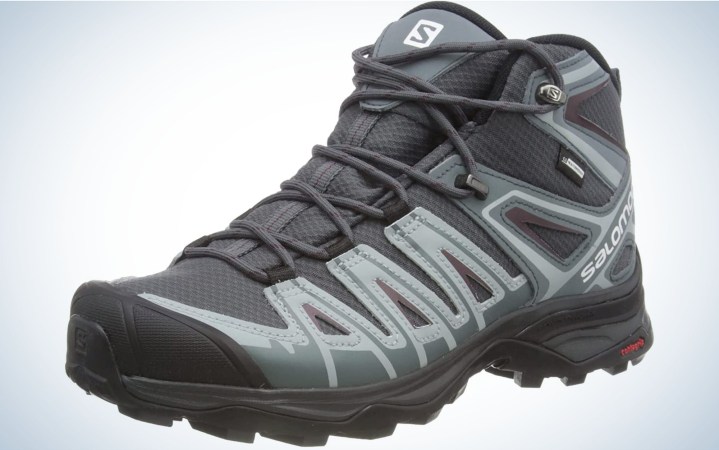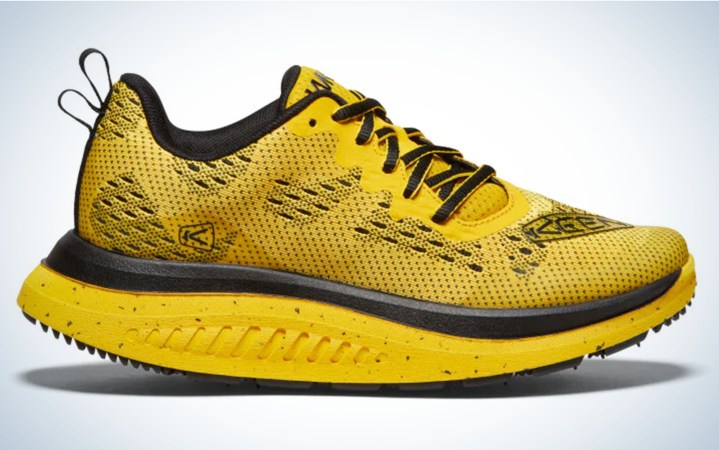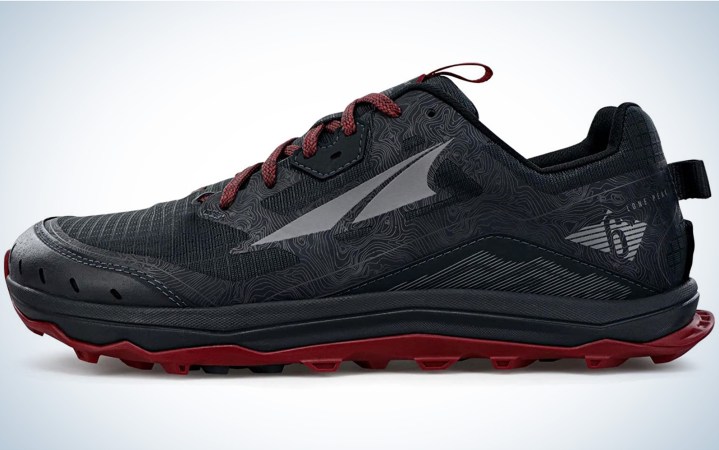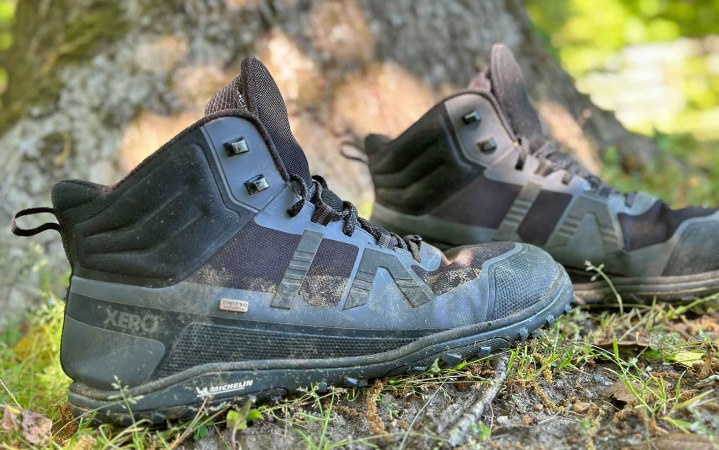We may earn revenue from the products available on this page and participate in affiliate programs. Learn More ›
Many people start hiking without hiking shoes and take to the trails in whatever sneakers or hand-me-down boots are around the house. While this can take plenty of people pretty far, depending on the terrain, there’s no replacement for a good pair of hiking shoes.
A shoe made for the kind of hiking you plan to do that fits your feet will help you fully enjoy your time outside. You can go farther when you’re comfortable and prepared. I’ve worn all of these shoes on everything from day hikes to multi-day adventures and I think they make the best hiking shoes for beginners.
- Best Overall: Merrell Moab 3
- Best Budget: Columbia Newton Ridge Plus Waterproof
- Best for Cold Weather: Salomon X Ultra Pioneer Mid Climasalomon Waterproof
- Best for Walking: KeenWK 400
- Best Trail Runner: Topo Ultraventure 2
- Best Lightweight: Altra Lone Peak 6
- Best Barefoot: Xero Scrambler Mid II WP
How We Chose the Best Hiking Shoes for Beginners
There are a ton of options for hiking footwear out there, but I looked at the top three most popular options: hiking boots, hiking shoes, and trail runners. Many beginners start with a hiking boot which is fair: They’re durable, protective, and stable. If you’re new to trails and don’t want to crush a toe against a rock or slip on steep or slick terrain, I think a hiking boot is a great choice. The ankle protection keeps debris out and the thick soles give you traction and durability. A hiking shoe is very similar to a hiking boot. The only difference between most hiking shoes versus boots is an ankle collar. The lack of collar can give a better range of motion and make them lighter, but be warned that it does not provide any ankle support.
A trail runner is a lightweight running shoe with increased traction for tackling trails at speed. If you hate every bulky hiking boot you try on, a trail runner is an excellent option. I selected a few of each type of hiking shoe, but they all meet the same criteria to excel as a beginner shoe. They’re comfortable out of the box, protect your feet, and provide trail-ready traction.
Best Hiking Shoes for Beginners: Reviews & Recommendations
Best Overall: Merrell Moab 3
Best Overall
Merrell Moab 3
Key Features
- Weight: 1 pound 10 ounces
- Drop: 11.5mm
- Lug: 5mm
- Merrell Air Cushion heel
- Vibram TC5+ outsole
- 100 percent recycled laces and webbing
- Available in a waterproof version
Pros
- Comfortable
- Durable
- Good for wider feet
Cons
- Heavy
The Moab 3 provides excellent shock absorption and traction while keeping out debris. The Vibram outsole is stable but flexible enough for technical maneuvers. Deep lugs keep traction on anything from slick rock to sand, though fine sediment tends to cling on to the shoe. Though, the thick walls, high backs, and bellowed tongue keep the inside of the shoe free from pesky rocks, dirt, and brush. The upper mesh and laces also keep out unwanted debris even in deep sand.
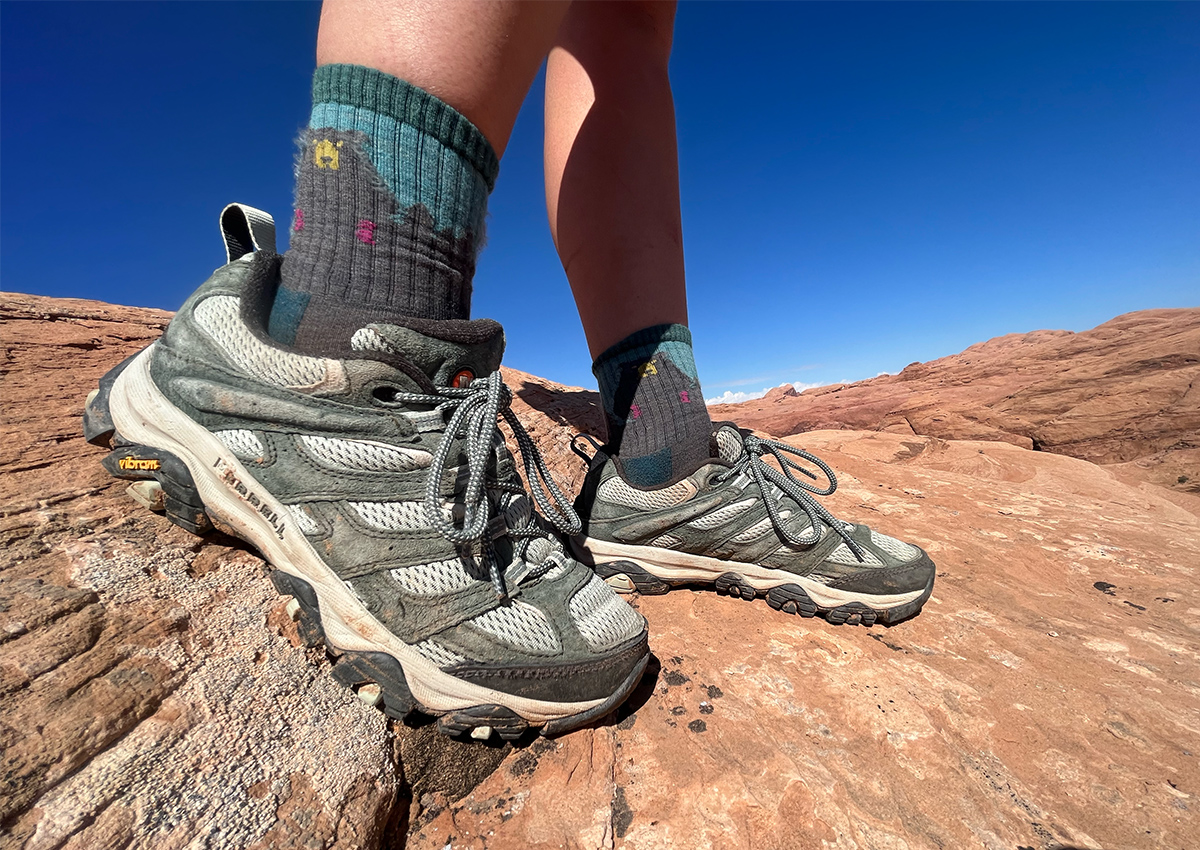
Last year, I put the Moab 3s through three days of intense durability testing in their namesake location. Dreams of peeling outsoles, ripped mesh, and tearing seams danced in my head as I crawled through tight rocks, stemmed across keeper holes, and stomped through muck, but alas, I failed to destroy this budget beast of a shoe. Instead, I found myself grateful for the intense grip, protective toe, and stellar shock absorption. If the Moab’s held up in Moab, you can count on these in almost any terrain.
Read my full Merrel Moab 3 review to learn more.
Best Budget: Columbia Newton Ridge Plus Waterproof Amped
Best Budget
Columbia Newton Ridge Plus Waterproof Amped
Key Features
- Weight: 1 pound 10 ounces
- Drop: 10 mm
- Waterproof
- Metal hardware
- Tech-lite midsole
- Omni-Grip rubber outsole
Pros
- Multi-terrain traction
- Comfortable
- Waterproof
Cons
- Hardwear hooks for lacing can bend
Columbia’s Newton Ridge boots are the best hiking boots for beginners because of their versatility, comfort, and waterproofing. The omni-grip rubber outsole is designed for rock, dirt, and gravel in wet or dry conditions. The older model was my first pair of hiking boots, purchased for a trip to Iceland where I explored under waterfalls, through snow and ice, and walked everywhere—all in the rain. My feet stayed dry and comfortable as I walked through puddles and even the waterfalls splashing over the ankle collar didn’t dampen the inside of my boots. The drop is on the lower end for hiking boots which I think contributes to the out-of-the-box comfort, along with a padded heel and tongue and lightweight cushioning.
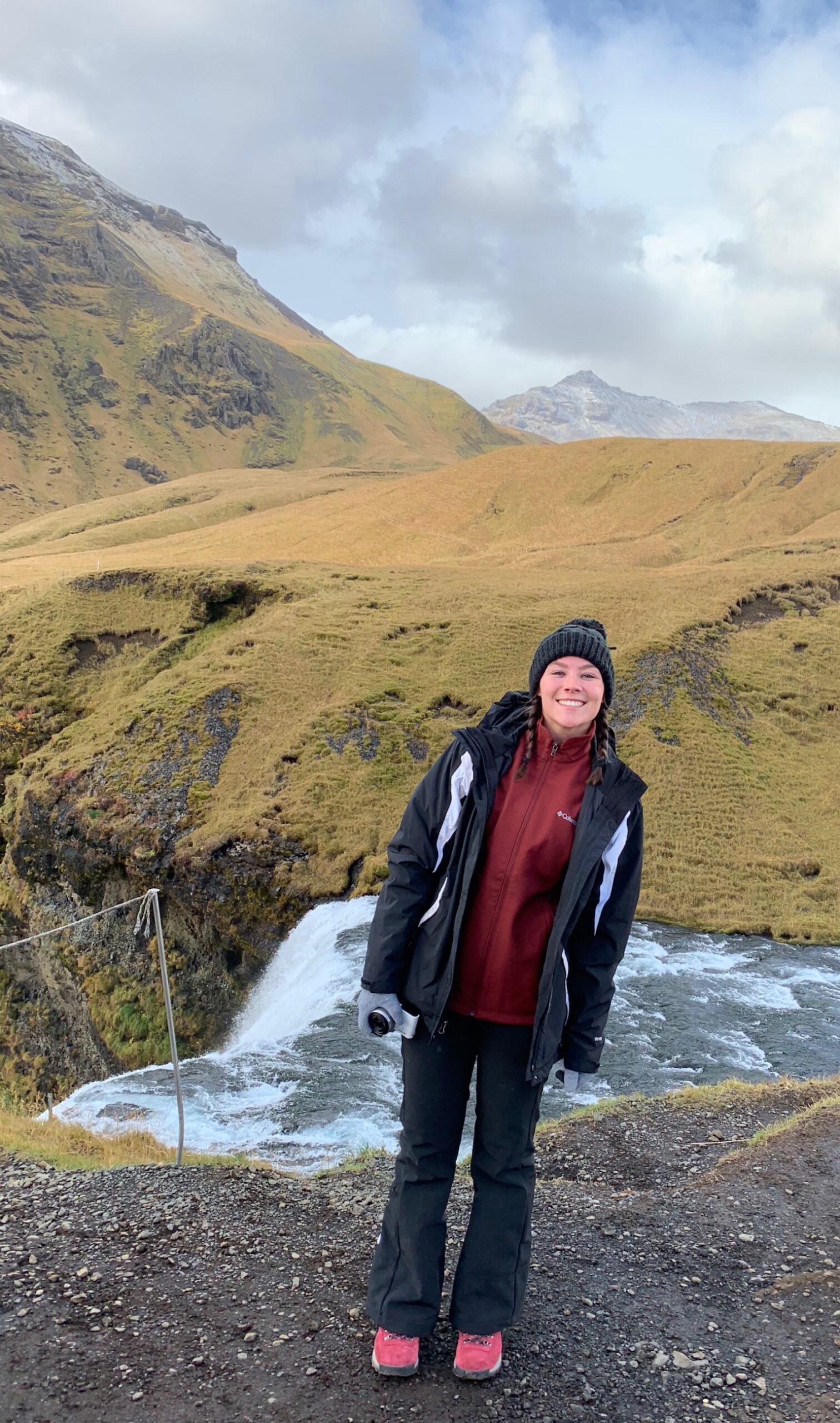
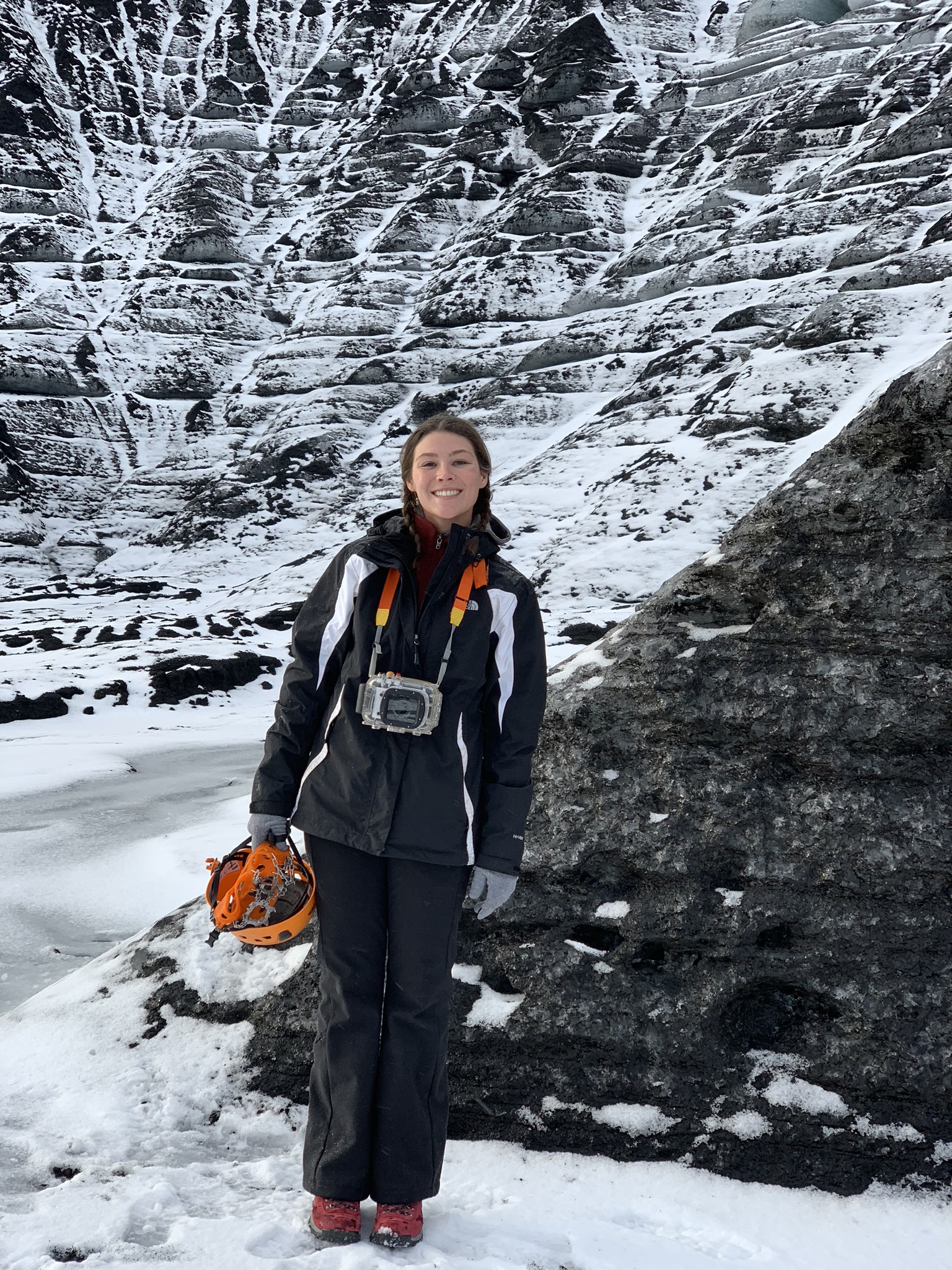
I owned these boots for five years and finally gave them up in favor of trail runners. While aesthetically, they looked worn, the structural integrity was still intact. These are durable shoes perfect for beginners to start their hiking journey. While the hardware is metal, it can bend a little, making lacing an issue if they become too outstretched. However, the positive side is that you can bend them right back with a pair of pliers or a multitool.
Best for Cold Weather: Salomon X Ultra Pioneer Mid Climasalomon Waterproof
Best for Cold Weather
Salomon X Ultra Pioneer Mid Climasalomon Waterproof
Key Features
- Weight: 1 pound, 12.2 ounces
- Drop: 11 mm
- ClimaSalomon waterproof
- Mud Contagrip outsole
- Advanced Chassis
- Chevron lugs
Pros
- Flexible
- Lightweight
- Waterproof
Cons
- Tongue can sometimes protrude
These boots are great for chilly spring and fall temps. Shoulder season means wet and cold conditions resulting in slick leaves and mud. A ClimaSaloman membrane bootie encapsulates the shoe ensuring complete water protection. These all-weather shoes also feature two types of rubber and a patterned heel area to grab the ground, giving you more control in wet terrain. Deep, chevron, multi-directional lugs provide sharp traction on soft surfaces like dirt and mud. These Mud Contagrip lugs are made from an adhesive compound that gives the wearer a secure foothold in loose rock, rugged terrain, and uneven surfaces.
The reinforced construction holds your foot comfortably in place, especially on steep downhills. The Advanced Chassis is a molded insert embedded in the outsole that gives you strong lateral support when bouncing from rock to rock. It is surrounded by foam cushioning for comfort and connects directly to the sole to stabilize your heel while delivering increased mobility and flexibility.
Stable and cushioned, the X Ultra Pioneers are the best hiking shoes for beginners looking to tackle tough terrain in less than ideal weather. They’re lightweight and flexible for speed and efficiency but the high ankle and deep lugs provide stability.
Best for Walking: KEEN WK 400
Best for Walking
KEEN WK 400
Key Features
- Weight: 1 pound, 10 ounces
- Drop: 17 mm
- KEEN.CURVE
- Multidirectional rubber lugs
- High-rebound EVA foam midsole
- Eco Anti-Odor
Pros
- Breathable
- Fun
- Comfortable
Cons
- Slim fit
The KEEN WK 400 is a newly released walking shoe with KEEN.CURVE technology. This shoe features a nylon plate, contoured fit, high-energy midsole, and curved design that all combine to capture the forward momentum of your pace. It gives the feeling that you’re rolling into every step. It’s a comfortable and athletic shoe that makes walking fun. If you’re interested in hiking, but want to start small, then these high-energy walking shoes are a great transition.
The multi-directional lugs and multi-surface outsole give enough traction for mild terrain, but I wouldn’t recommend wearing them on slick or very steep trails. If your hikes are typically low in elevation change on dirt, rock, or pavement, then these will add some pep to your step. The anti-odor treatment keeps them fresh for walking around town, the park, or along a casual trail.
KEEN’s WK 400 has a contoured fit for optimizing the KEEN.CURVE technology. While I didn’t feel constricted, the slim fit might not be suitable for those with wide feet. There is less room in the toe box than KEEN shoes are traditionally known for meaning there isn’t a lot of toe splay for harsh terrain. The thick cushion and outsole with the high drop also means you can’t feel obstacles under your feet.
Best Trail Runner: Topo Ultraventure 2
Best Trail Runner
Topo Ultraventure 2
Key Features
- Weight: 1 pound, 6 ounces
- Drop: 5mm
- Lug Height: 6mm
- Vibram XS Trek EVO rubber outsole
Pros
- Wide toe box
- Moderate cushion
- Great heel lock
Cons
- Durability in harsh terrain
- No wide option
This trail runner is the perfect bridge from a hiking boot to a lightweight hiking shoe. The wide toe box allows for excellent toe splay favoring stability and balance on rocky terrain. It breathes easy and the thick lugs and cushioning outsoles make for an extremely comfortable trail runner out of the box. If you’re interested in a minimalist shoe, but concerned about making the jump, this shoe can act as a transition between a shoe like the Merrell Moab and a zero drop shoe like the Altra Lone Peak. Its lower stack height and heel drop is just minimalist enough to ease your feet and gait into new footwear while the heel lock keeps you feeling secure. There is no wide option, but the toe box has a good amount of room.
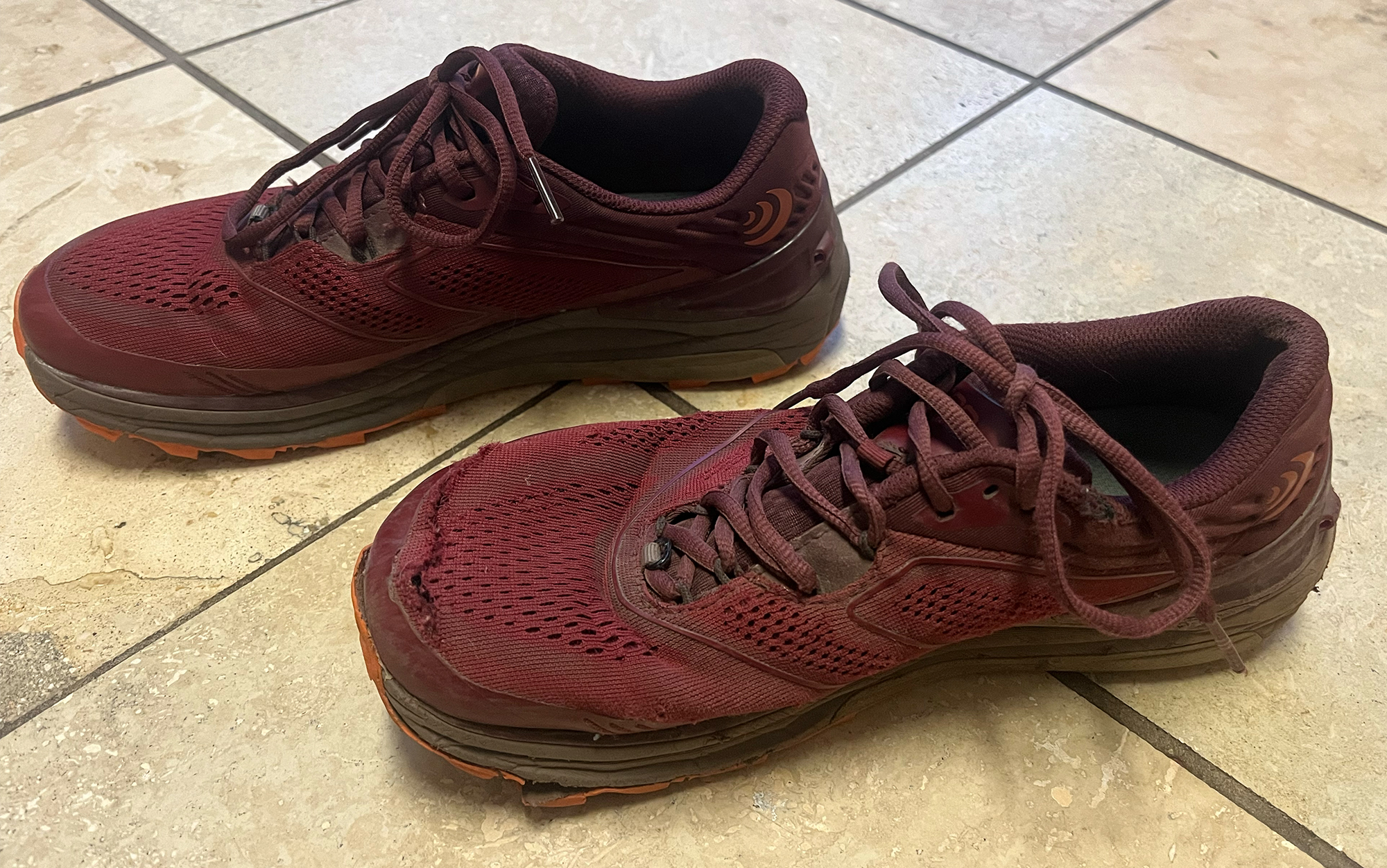
If you’re frequenting talus fields or scree-filled slopes, you might run into durability issues. I did 100 miles above alpine in these shoes and came home to rip one on a dirt trail day hike. While I certainly put this shoe through the wringer, it was only 5 months old and in the vicinity of 200 miles. It shouldn’t have damage to the extent noticeable in the photo. However, the Topo team did replace my pair after the rip and the replacement is still my go-to shoe. It is one of the best hiking shoes for beginners because of how lightweight and roomy it is while still providing good support and traction.
Best Lightweight: Altra Lone Peak 6
Best Lightweight
Altra Lone Peak 6
Key Features
- Weight: 1 pound, 3 ounces
- Drop: 0mm
- Altra EGO foam midsole
- MaxTrac rubber outsole
- Includes a rock plate
- Available in wide
Pros
- Lightweight
- Zero drop
- Wide toe box
Cons
- Can be too roomy
If you’re looking for your first zero drop shoe, the Altra Lone Peak is a great place to start. Zero drop footwear can take some easing into, but the Lone Peak’s rock plate and wide toe box allow you to tackle plenty of tough terrain even in a minimalist shoe. The cushion and arch support are minimal, meaning you’ll feel the terrain under your feet. This can be a pro if you’re looking to feel the ground for stability and maneuverability. But if you have sensitive feet or high arches, you might be searching for more padding.
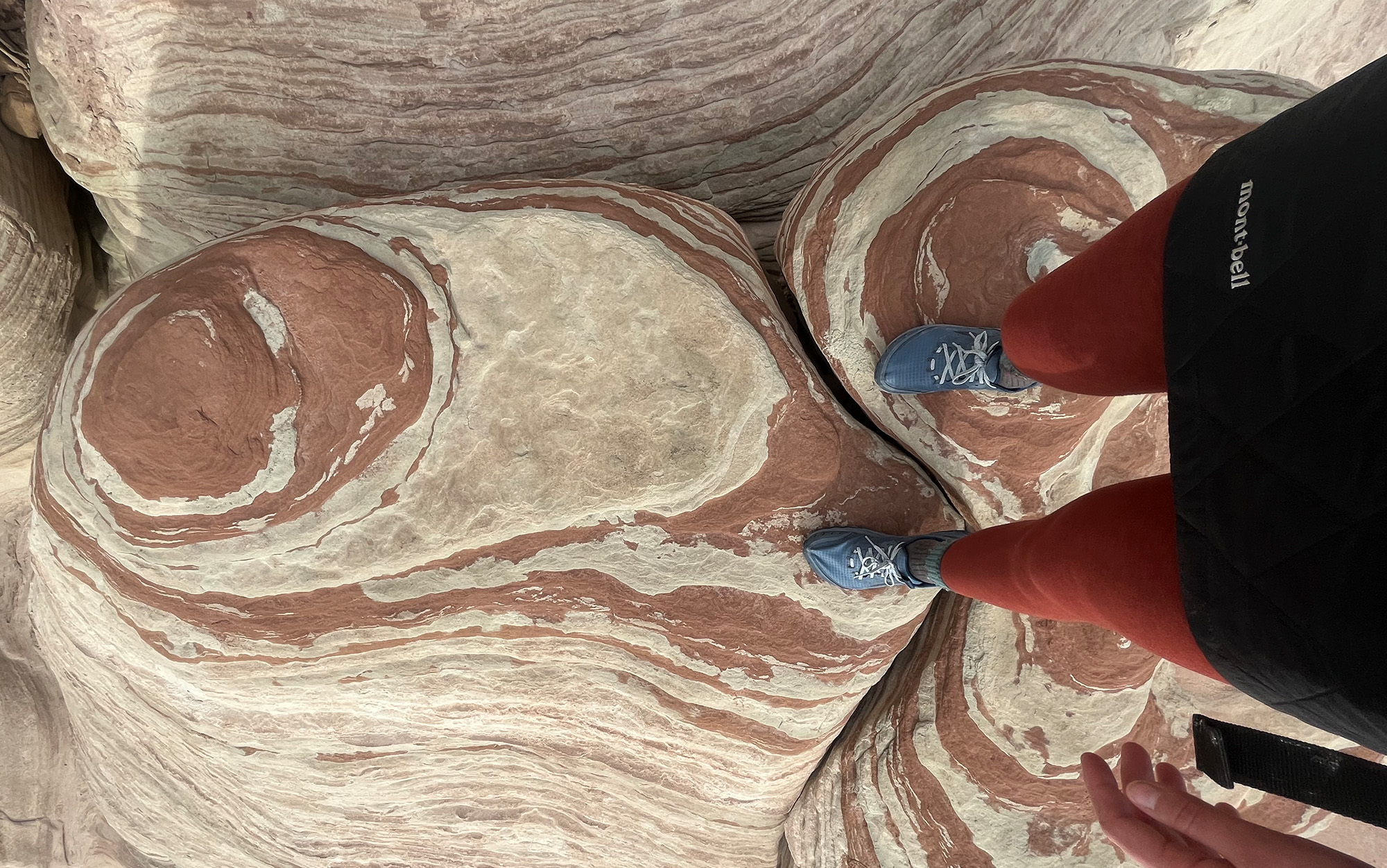
The MaxTrac outsole doesn’t perform as well on ice or slick terrain as some of the thicker outsoles on this list. However, if you’re looking for speed and minimalism, these have great traction for dry trails and steep inclines. Responsive and comfortable, the Altra Lone Peaks have a large following amongst runners, backpackers, and hikers.
These minimal trail runners can offer increased spatial awareness, balance, and posture when hiking. The wide toe box also allows for plenty of toe splay. Customizable lacing is an upgrade from the Lone Peak 5, so now wearers can tie their shoes in a way that fits their unique foot.
Read the full Altra Lone Peak review to learn more.
Best Barefoot: Xero Scrambler Mid II WP
Key Features
- Men’s Sizes: 6.5 to 15
- Women’s Sizes: 5 to 12
- Weight Per Boot: 12.2 ounces (men’s size 9); 1 pound, 0.3 ounce (measured men’s 14)
- 5,000 mile sole warranty
- Waterproof
- Uses eVent a bio-based, planet positive, and waterproof membrane
- Michelin sole
Pros
- Good compromise between a traditional hiking boot and minimalist shoe
- True sizing
- Grippy sole
- Wide toe box
Cons
- Some people will need a transition period to get used to these boots
I started my journey into zero-drop shoes two years ago with a pair of Altra Lone Peaks, and they radically changed my opinions on hiking shoes. I then tried Xero HFS II shoes, which turned me from a barefoot convert to a zealot. They allow me to walk with a more natural gait, which relieved my nagging knee and hip flexor pain. Yet, some activities require more support and I’m more comfortable with a mid-height boot. I still don’t want the weight or heel height of a traditional hiker though.
That’s the niche the Scrambler Mid II WP fills for me. When I’m doing a lot of off-trail walking, side hilling, climbing through dead falls, or in an area with sharp rocks, the Scramblers are my go-to because they have a thick (for an ultralight boot) outsole that offers more protection. Although, Xero says the sole is made to look thicker than it is so that the boots have the appearance of a traditional hiker. For a point of reference, the sole is about as flexible as my Altra Lone Peaks.
The upper is flexible enough that I can move my foot naturally, but it still provides adequate support. One of the main reasons I like a mid-height boot is that they’re harder to get sucked off my feet when I’m going through mud or tangles of laydowns. The higher height is also helpful for keeping things out of my shoes when gators are overkill.
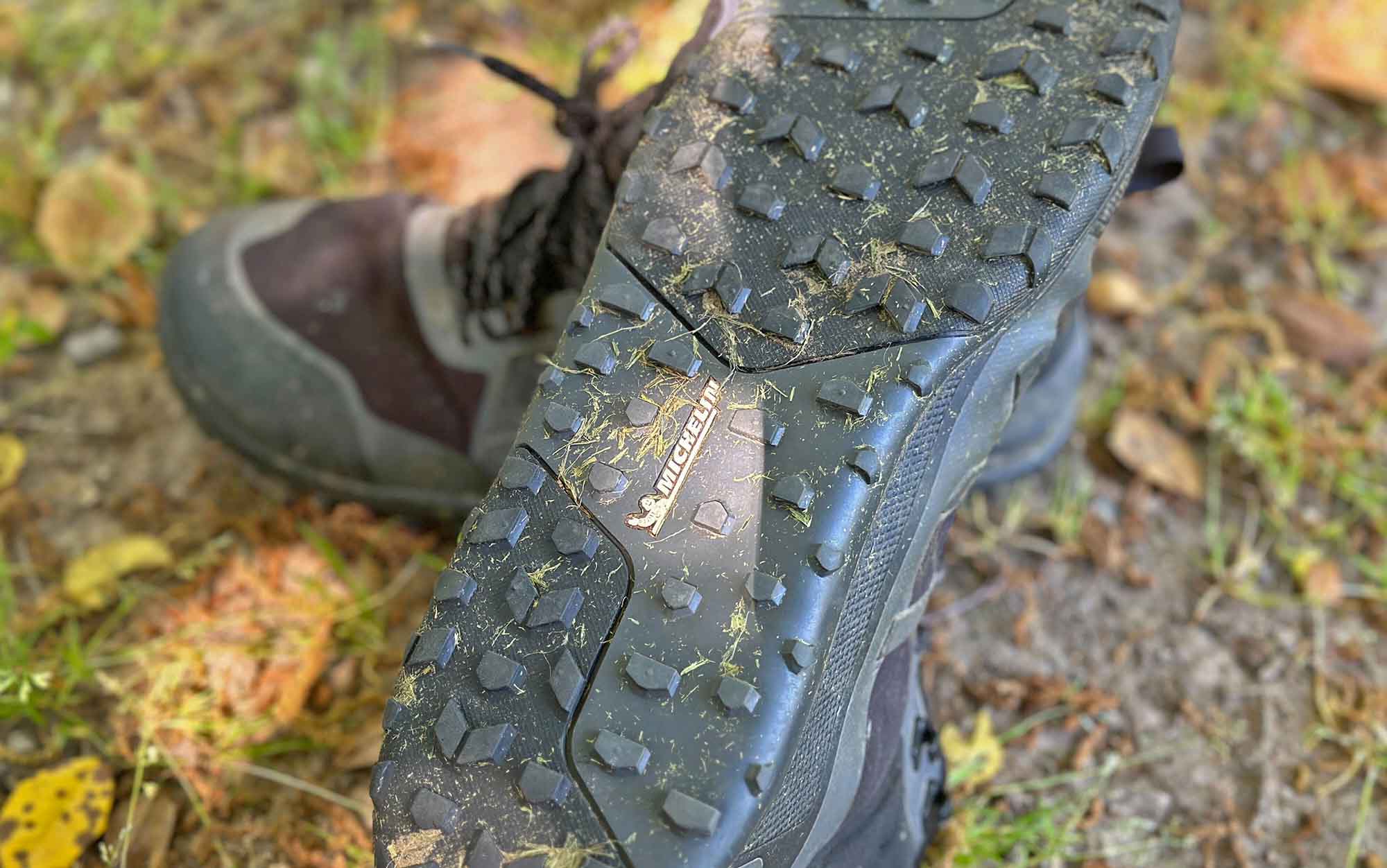
Scott Einsmann
The fit on my regular width, size 14 feet is spot on. The toe box is roomy, but not overly large, and my feet feel well supported. I’d say the toe box is a touch narrower than my Altra Lone Peaks, but it still has good toe splay. I’ve put over 150 miles over four months on these boots in terrain from rocky Arizona deserts to Virginia forests, and I’m blister free. In fact, I haven’t had the slightest bit of discomfort while wearing the Scramblers. I’ve transitioned to wearing these boots without socks or with very thin running socks, which, for me, has made them even more comfortable.
I haven’t climbed shale walls, walked ice trails, or done any scrambling in the Scramblers, but I often hike in wet conditions. The traction has been good, in the rainy spring weather and my lugs are still sharp with little wear. The boots have a lot of life left in them and I’d guess they’ll last at least another few hundred miles before I get another pair. And I’ll definitely be getting another pair. —Scott Einsmann
Read Next: Best Barefoot Shoes, According to Experts
How to Choose the Best Hiking Shoes for Beginners
Ankle Support
It turns out that the upper of a hiking boot does not help prevent ankle rolling—it’s actually the firmness of the base that does this. If you’re thinking about switching to a hiking shoe from a hiking boot, you can test this by trying to twist the base of the shoe. If it moves, it won’t provide as much ankle support.
Arch Support
On long hikes or backpacking trips, it’s common for the arch of the foot to become fatigued, which can lead to plantar fasciitis. A common cause of this, especially among day hikers and backpackers, is overpronation, where the foot leans or collapses inward. Anyone experiencing this, or suffering from pain while they walk might benefit from an insole like Superfeet (individuals with exceptionally strong arches may prefer a Currex insole).
Shoe Size
With hiking shoes, it’s important that there’s some space between your toes and the end of the shoe—aim for about a finger’s width of space between the end of your toes and the tip of the shoe. For most people, that will work to about a half size larger than they typically wear. However, Kelley cautions that many people, especially women, rely on shoe sizings that they received when they were younger, and don’t take into account the natural growth of the foot over time. Getting your foot sized by a professional—something you can do through REI’s Virtual Outfitting without visiting a store—is an important part of choosing a hiking shoe.
Traction
Traditionally, one of the most important differences between trail runners and hiking shoes was the size of the lugs. But today, there are a number of trail runners on the market with substantial lugs that mirror the functionality of traditional hiking shoes or boots.
Durability
One important difference between hiking shoes and trail runners is durability. Hiking shoes typically last for 500 to 700 miles, while trail runners only last 300 to 500 miles. Factors that can affect this include the durability of the rubber, the sole, the midsole, and the uppers (leather vs. mesh), as well as the weight of the person wearing the shoes and the conditions they frequent. —Laura Lancaster
FAQs
Buying a pair of the best hiking shoes for beginners is a good way to avoid your feet hurting while hiking. Try on multiple pairs and walk around in them, test them on inclines and other uneven surfaces. If you’re still having foot pain, one of the best insoles for hiking boots could help. Sometimes it is also wise to buy a half to a whole size up from your normal shoe size as intense activity like hiking can make your feet swell.
Yes. Hiking shoes are great for walking if you’re looking for extra support and durability. However, keep in mind that this will wear out your boots faster. You might also consider the KEEN WK 400 as a supportive and cushioned shoe designed specifically for walking.
Sometimes, yes, but not all running shoes are the same. Trail runners are frequently used for hiking and backpacking. They’re made for trails and can typically handle the terrain. Plenty of hikers and backpackers opt for trail runners as their go-to hiking shoe. Running shoes designed for a track or pavement are just fine for plenty of hikes, but it may not provide the traction and durability necessary for a quality hiking shoe. These shoes won’t protect your foot as well from rocks or rain, and it will wear out much faster than one of the shoes on this list.
Final Thoughts on the Best Hiking Shoes for Beginners
The best hiking shoes for beginners are comfortable out of the box, durable, and provide enough traction for all different terrain types. I picked out the top hiking boots, shoes, and trail runners that meet this criteria to help you hit the trails. The right hiking boots for you should be painless, so I recommend physically trying on a few different models to avoid any aching on your first hike.
- Best Overall: Merrell Moab 3
- Best Budget: Columbia Newton Ridge Plus Waterproof
- Best for Cold Weather: Salomon X Ultra Pioneer Mid Climasalomon Waterproof
- Best for Walking: KeenWK 400
- Best Trail Runner: Topo Ultraventure 2
- Best Lightweight: Altra Lone Peak 6
- Best Barefoot: Xero Scrambler Mid II WP

